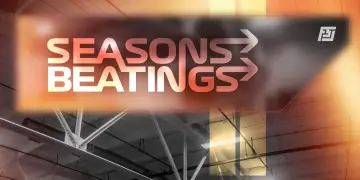John Danaher recently took part in an interview with BJJ legend Roger Gracie and when they got onto the topic of standing grappling in the sport, Danaher made his feelings very clear. It’s one of the most contentious topics in Jiu-Jitsu, as a large number of competitors choose to pull guard rather than engage in a battle on the feet. Major organizations like the IBJJF only encourage guard-pulling over takedowns by not penalising it, and by giving successful takedowns only a small number of points. For competitors choosing to think tactically, it makes sense then that they might choose to pull guard instead.
Obviously there’s nothing wrong with competitors making tactical decisions that benefit them; ultimately it’s how they give themselves the best chance of winning. Danaher pointed out that it has led to an undesirable outcome though:
“The overwhelming majority of even expert Jiu-Jitsu players are simply incompetent in the standing position.”
It seems as though Danaher is even including competitors who actually do pursue the takedown rather than pulling guard too. According to him, a lot of their difficulty on the feet come as a result of a fundamental mistake:
“Jiu-Jitsu coaches and athletes have looked at other grappling styles that do have a strong emphasis in standing position and takedowns and use the very naive approach of just copy and pasting.”
Although other grappling styles like Judo and wrestling have mastered the art of taking someone down, the difference in rulesets leads to different approaches. John Danaher went on to explain the biggest way the rules differ between those standing grappling sports and BJJ:
“In Jiu-Jitsu, the smallest takedown scores the same as the biggest takedown, and once the throw is completed the match has just begun.”
With such a big difference, the effect on how standing grappling works is huge:
“Wrestling and Judo favor risk. The more risk you take, the more points you score. In Jiu-Jitsu, if you take a risk in exposing your back, you’re getting punished for taking the risk.”
This only reinforces the BJJ tendency to pull guard rather than engage in standing grappling because, as John Danaher explained, there’s an inherent risk to any takedown. When the reward is just two points and top position, it’s not hard to see why many competitors will choose to avoid that battle altogether. They can opt for bottom position instead without conceding any points and for some grapplers like Mikey Musumeci, that’s where they’re best anyway. That literal race to the bottom isn’t something Danaher supports though:
“We can’t have situations where champions come scurrying out and just sitting down because they literally don’t know a single takedown.”
Danaher finished off by talking about the best takedowns for BJJ, explaining the criteria that he believes makes for the ideal approach to standing grappling for competitors:
“Jiu-Jitsu is looking for takedowns that exhibit control rather than amplitude. Small, low amplitude takedowns which enable you to finish in a dominant position are much more appropriate for the Jiu-Jitsu athlete than big, high-amplitude risky takedowns.”
The full interview with John Danaher where he discusses standing grappling in BJJ was uploaded to the official YouTube channel of Roger Gracie TV:













